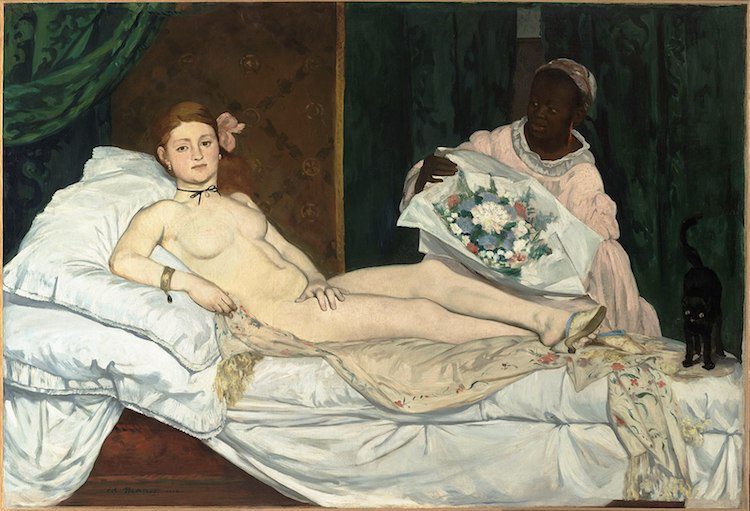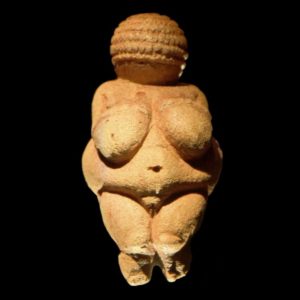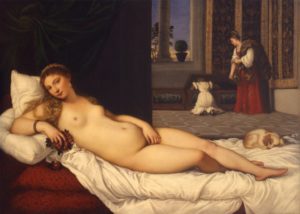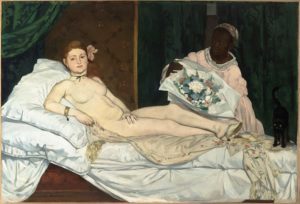
Female Nudity in Western Art
Throughout Western art, the subject of the female nude has practically been used since the beginning of time. To the point where you can find a depiction in almost every art period.
Since the topic is so popular, many have overlooked its significance: combining generations of the female nude into one category.
Before we begin, know that in the art world nudity refers to an individual undressed and confident, while naked is one who is undressed but timid and self-conscious.
Venus of Willendorf (approx. 30,000 BCE)
The Venus of Willendorf is a prehistoric figurine found in Austria. She is arguably the first “ideal woman” depicted in art, given the name “Venus” by art historians. Having accentuated body parts of wide hips and large breasts, she solidifies that prehistoric people valued fertility above all in a woman: especially with her lack of facial detail. This small figurine is one of many, with art historians believing they were used as a fertility charm among the Paleolithic people in the region.
Venus of Urbino (1534)
The Venus of Urbino is a Venetian Renaissance painting by Titian. The work revolutionized the traditional genre of the reclining nude. In previous art, female nudes did not gaze upon the viewer, until Titian released his erotic masterpiece in 1534. The painting depicts a woman, some say she is indeed the goddess Venus or a new wife awaiting her husband. She lays in a renaissance palace, with her maids behind her.
The painting is highly naturalistic and the colors are soft: showcasing her delicate, feminine character as she clutches rose petals. The dog on her bed symbolizes loyalty: perhaps commenting on her obedience to her new husband.
Olympia (1863)
Olympia by French Realist Édouard Manet took inspiration from Titian’s Venus and turned it on its head. The painting created one of the biggest scandals in 1860’s Paris, as viewers were outraged with this display at the Paris Salon. The painting undeniably illustrates a prostitute (a subject uncommonly highlighted in fine art), staring into her client’s eyes. Her Black maid presents her with a bouquet, emphasizing the racial divisions of the time.
Manet dressed Olympia with a black string around her neck and replaced Titian’s dog with a black cat: symbolizing her promiscuity and sensuality. Olympia, a common name for 19th-century Parisian escorts, outraged viewers with her confrontational stare. She is expressing control of her body and defying the patriarchy. Her skin almost has a green undertone, and the quick brushstrokes make her look bold and raw. She is feminine in her own right, independent and self-assured.
In just three examples, it is clear that the female nude has a great variety of meaning in Western art. Next time you find yourself in a museum and stumble across a female nude, do not overlook it. It is crucial to consider its time period and the story the artist is telling you.





